Seunghyun Kong
The Trace Criterion for Kernel Bandwidth Selection for Support Vector Data Description
Nov 15, 2018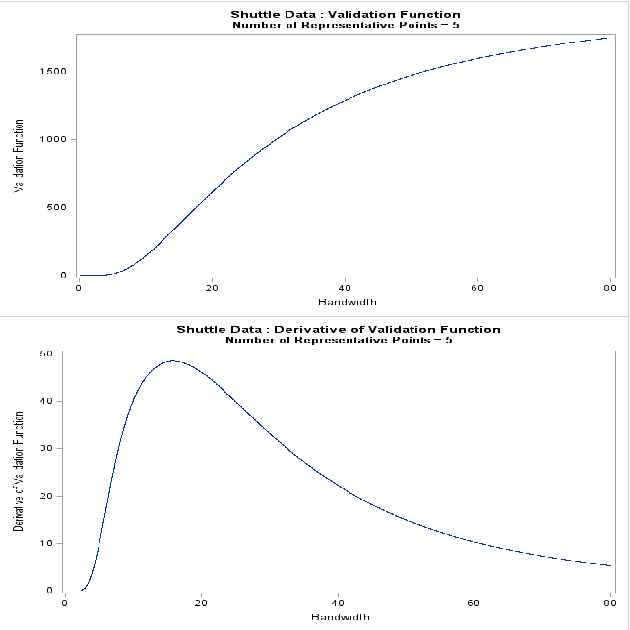
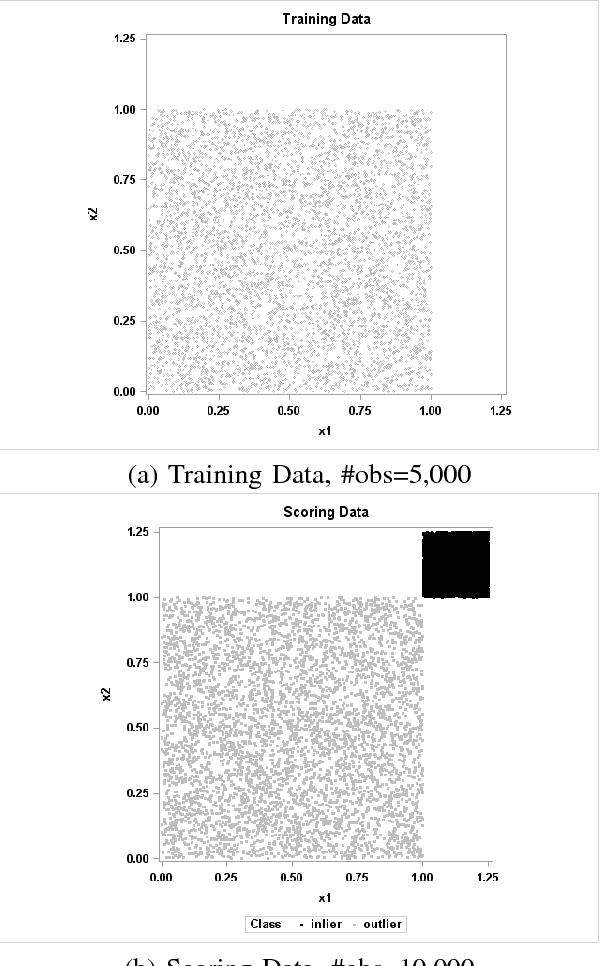
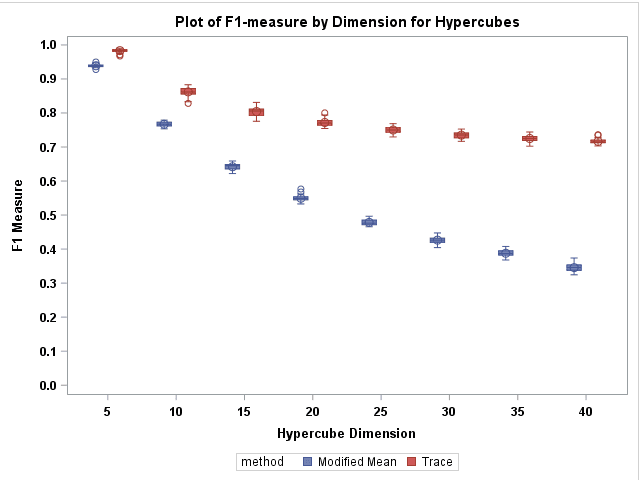
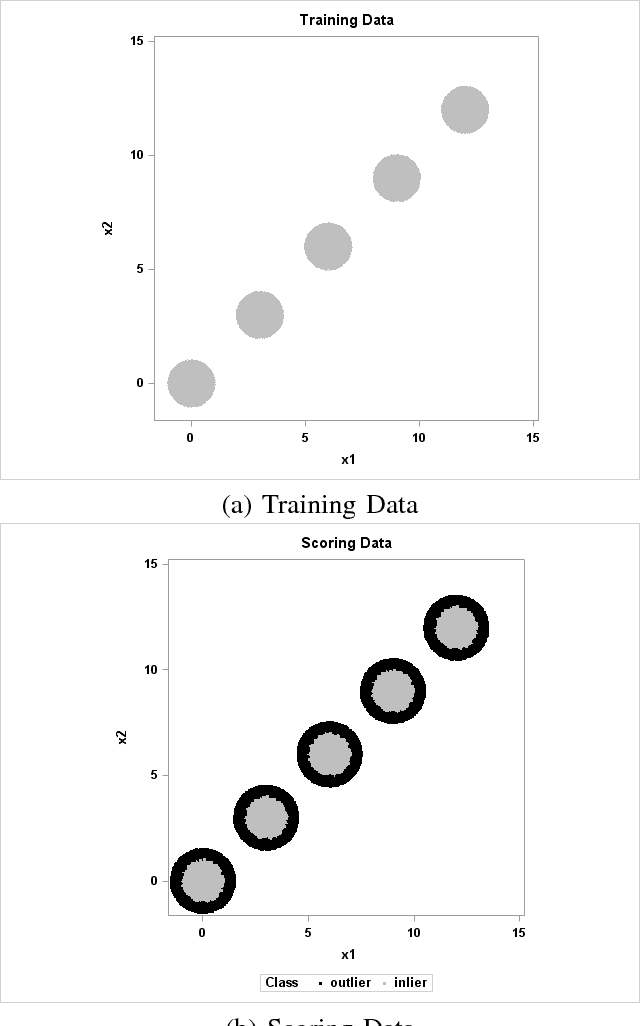
Abstract:Support vector data description (SVDD) is a popular anomaly detection technique. The SVDD classifier partitions the whole data space into an $\textit{inlier}$ region, which consists of the region $\textit{near}$ the training data, and an $\textit{outlier}$ region, which consists of points $\textit{away}$ from the training data. The computation of the SVDD classifier requires a kernel function, for which the Gaussian kernel is a common choice. The Gaussian kernel has a bandwidth parameter, and it is important to set the value of this parameter correctly for good results. A small bandwidth leads to overfitting such that the resulting SVDD classifier overestimates the number of anomalies, whereas a large bandwidth leads to underfitting and an inability to detect many anomalies. In this paper, we present a new unsupervised method for selecting the Gaussian kernel bandwidth. Our method, which exploits the low-rank representation of the kernel matrix to suggest a kernel bandwidth value, is competitive with existing bandwidth selection methods.
The Mean and Median Criterion for Automatic Kernel Bandwidth Selection for Support Vector Data Description
Aug 21, 2017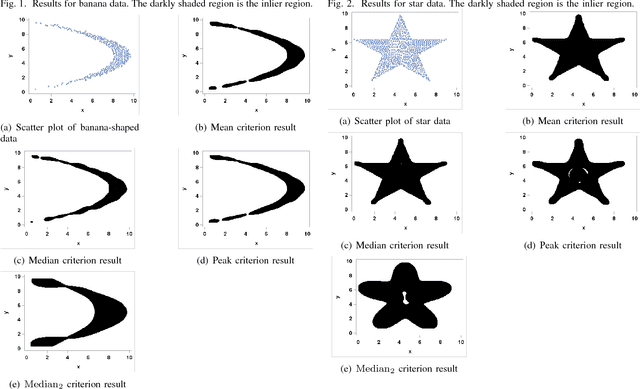
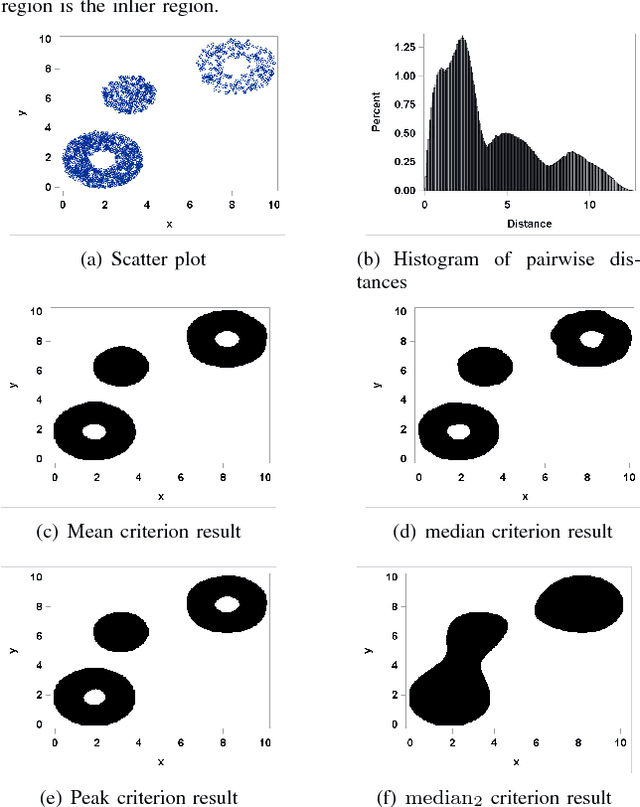

Abstract:Support vector data description (SVDD) is a popular technique for detecting anomalies. The SVDD classifier partitions the whole space into an inlier region, which consists of the region near the training data, and an outlier region, which consists of points away from the training data. The computation of the SVDD classifier requires a kernel function, and the Gaussian kernel is a common choice for the kernel function. The Gaussian kernel has a bandwidth parameter, whose value is important for good results. A small bandwidth leads to overfitting, and the resulting SVDD classifier overestimates the number of anomalies. A large bandwidth leads to underfitting, and the classifier fails to detect many anomalies. In this paper we present a new automatic, unsupervised method for selecting the Gaussian kernel bandwidth. The selected value can be computed quickly, and it is competitive with existing bandwidth selection methods.
Peak Criterion for Choosing Gaussian Kernel Bandwidth in Support Vector Data Description
Aug 08, 2017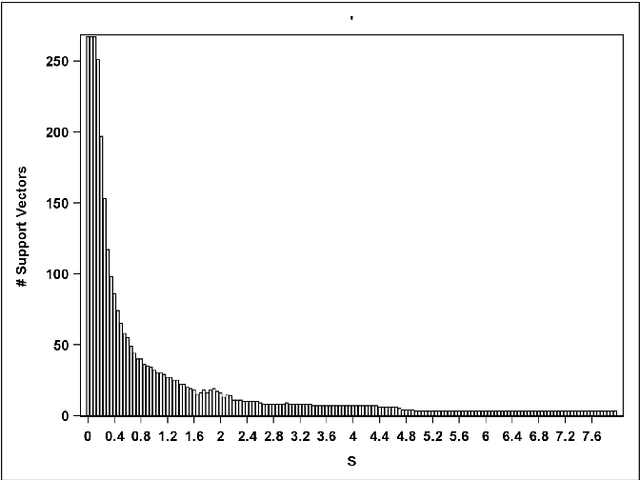

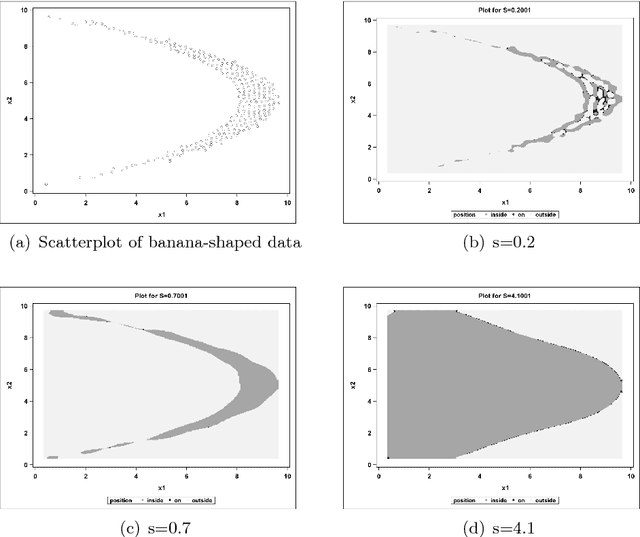
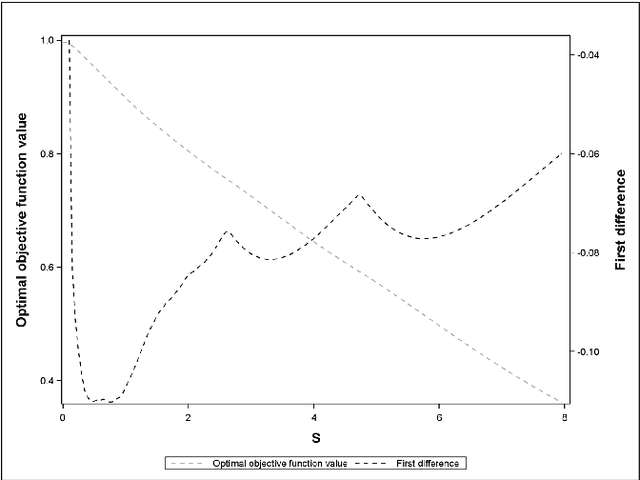
Abstract:Support Vector Data Description (SVDD) is a machine-learning technique used for single class classification and outlier detection. SVDD formulation with kernel function provides a flexible boundary around data. The value of kernel function parameters affects the nature of the data boundary. For example, it is observed that with a Gaussian kernel, as the value of kernel bandwidth is lowered, the data boundary changes from spherical to wiggly. The spherical data boundary leads to underfitting, and an extremely wiggly data boundary leads to overfitting. In this paper, we propose empirical criterion to obtain good values of the Gaussian kernel bandwidth parameter. This criterion provides a smooth boundary that captures the essential geometric features of the data.
Sampling Method for Fast Training of Support Vector Data Description
Sep 25, 2016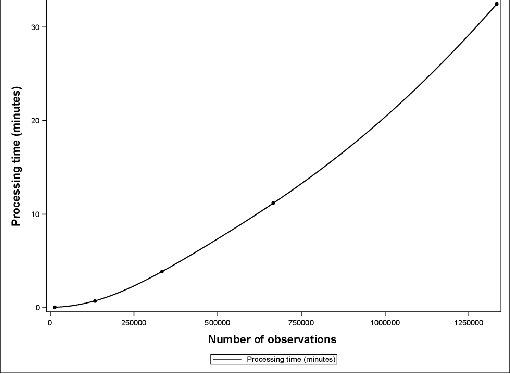
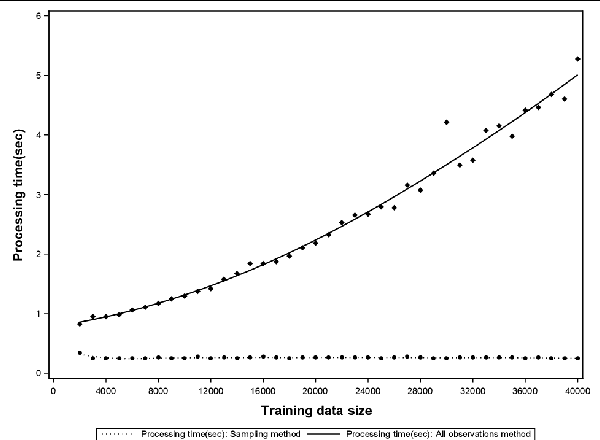
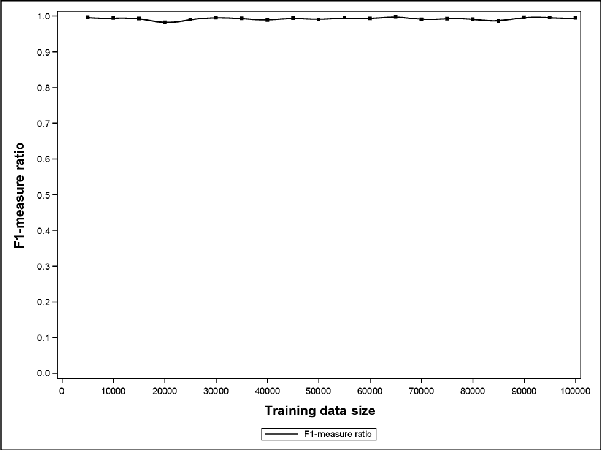
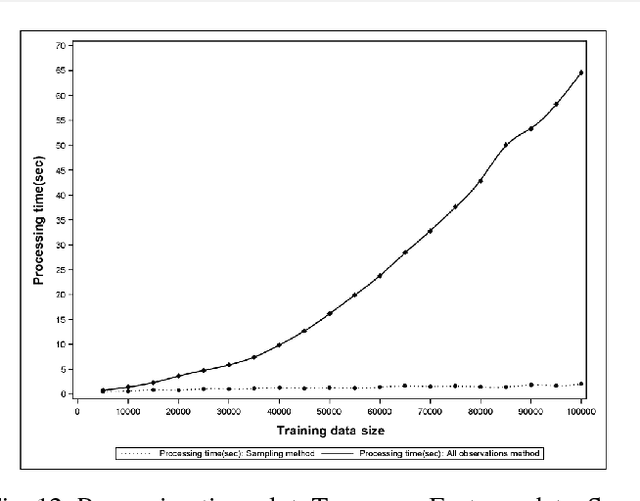
Abstract:Support Vector Data Description (SVDD) is a popular outlier detection technique which constructs a flexible description of the input data. SVDD computation time is high for large training datasets which limits its use in big-data process-monitoring applications. We propose a new iterative sampling-based method for SVDD training. The method incrementally learns the training data description at each iteration by computing SVDD on an independent random sample selected with replacement from the training data set. The experimental results indicate that the proposed method is extremely fast and provides a good data description .
 Add to Chrome
Add to Chrome Add to Firefox
Add to Firefox Add to Edge
Add to Edge